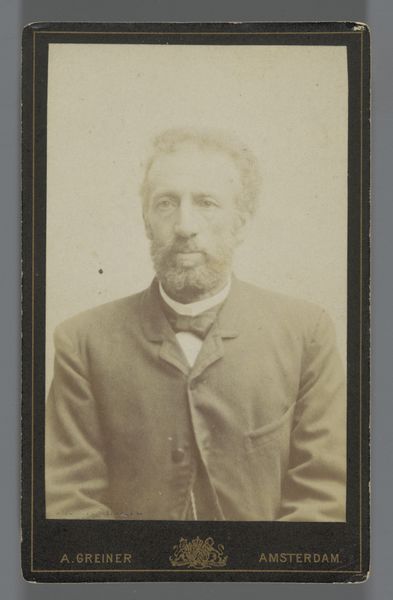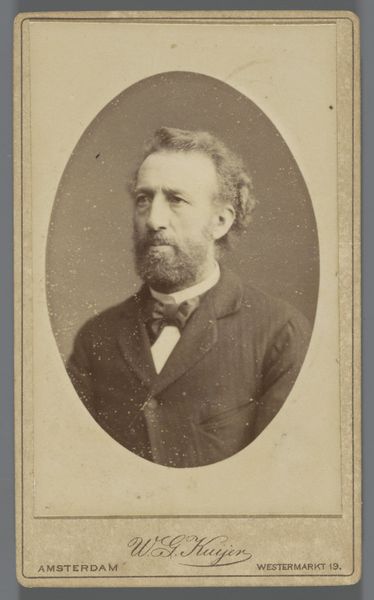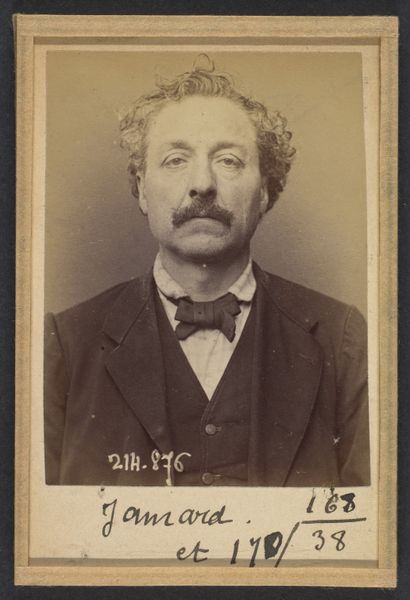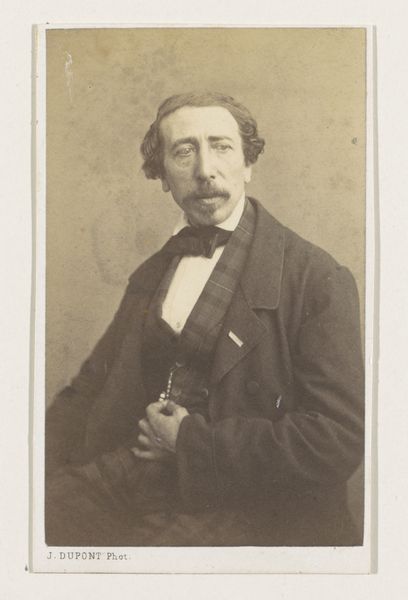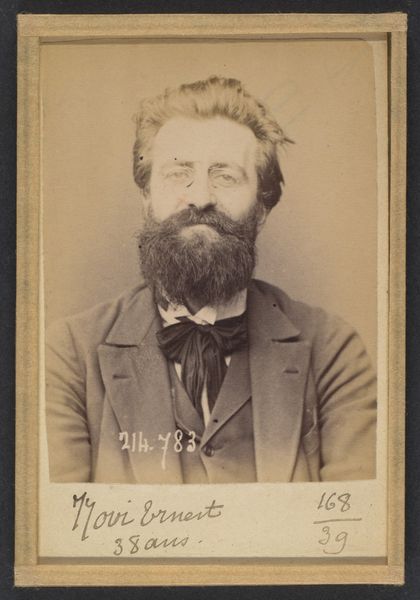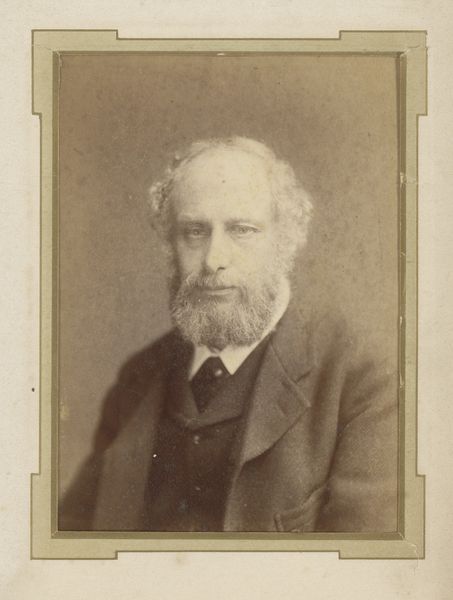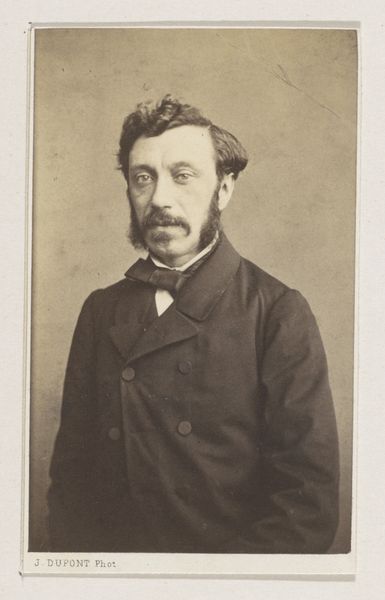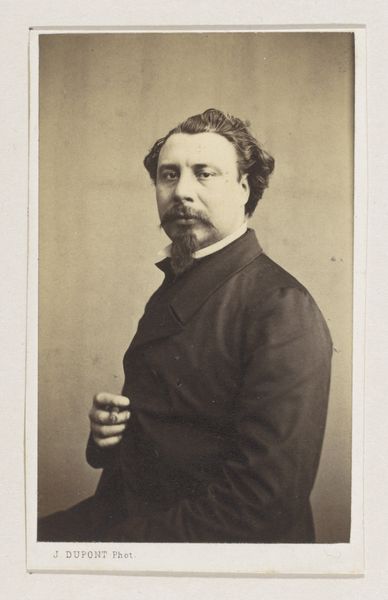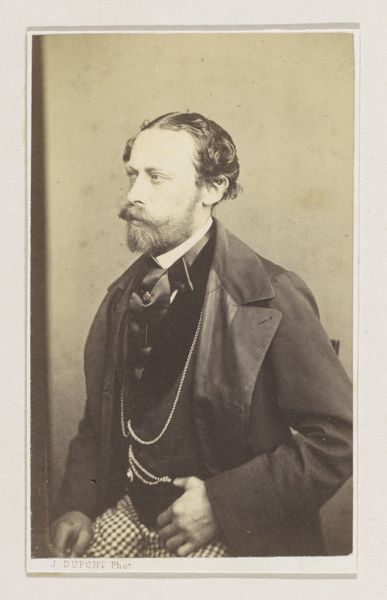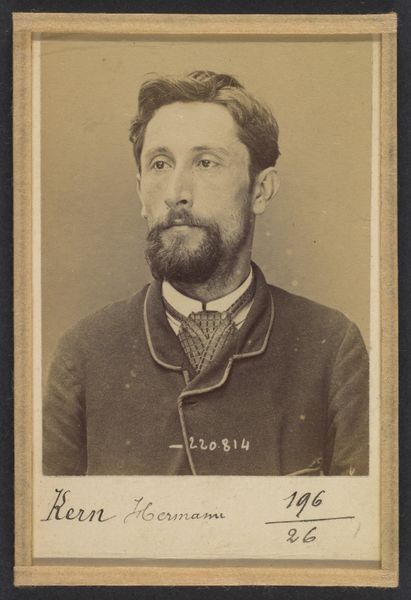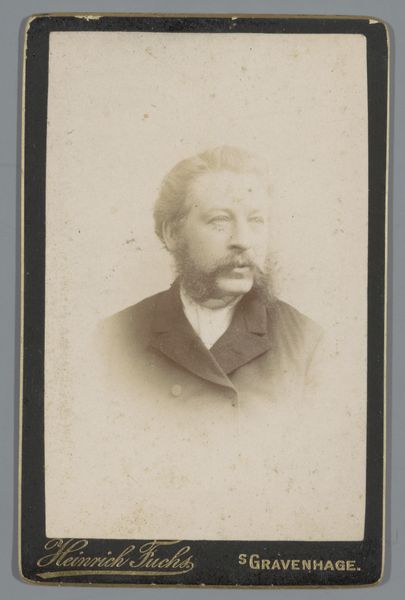
Portret van een man uit de familie Marmelstein, vermoedelijk de vader van A. F. Marmelstein 1850 - 1900
0:00
0:00
albertgreiner
Rijksmuseum
Dimensions: height 164 mm, width 104 mm
Copyright: Rijks Museum: Open Domain
Editor: Here we have "Portret van een man uit de familie Marmelstein, vermoedelijk de vader van A. F. Marmelstein," dating from somewhere between 1850 and 1900, currently housed in the Rijksmuseum. It’s an albumen print. It has a formality to it. How would you interpret the composition of this work? Curator: The image commands attention through its stark composition and limited tonal range, resulting in what appears to be a deliberate exercise in simplicity. Observe the subject's centered placement and the almost symmetrical arrangement of his clothing. The textural contrast is most evident in the distinction between the soft focus of his hair and beard, versus the comparative sharpness of his facial features. Does the even lighting across the portrait strike you as contributing to a specific mood or effect? Editor: I hadn't really thought of it, but the lighting flattens the image and emphasizes the man’s expression, even his gaze. How does that direct our understanding? Curator: Precisely. Consider the meticulous arrangement of form and light; they prioritize the character of the subject, an unembellished rendering. The photograph, in its rigorous composition, seems to reflect the ethos of the era. Can we view it as more than just a historical artifact, and instead examine its own structured system? Editor: I suppose viewing it solely through a historical lens might limit our appreciation of the technical and artistic choices, but seeing the details you highlighted definitely opens up a fresh perspective. Curator: Indeed. The play of textures, the calibrated contrast, and overall composition offers a deeper understanding of this portrait's enduring appeal. Editor: Thank you! It has been insightful to appreciate these compositional techniques.
Comments
No comments
Be the first to comment and join the conversation on the ultimate creative platform.
